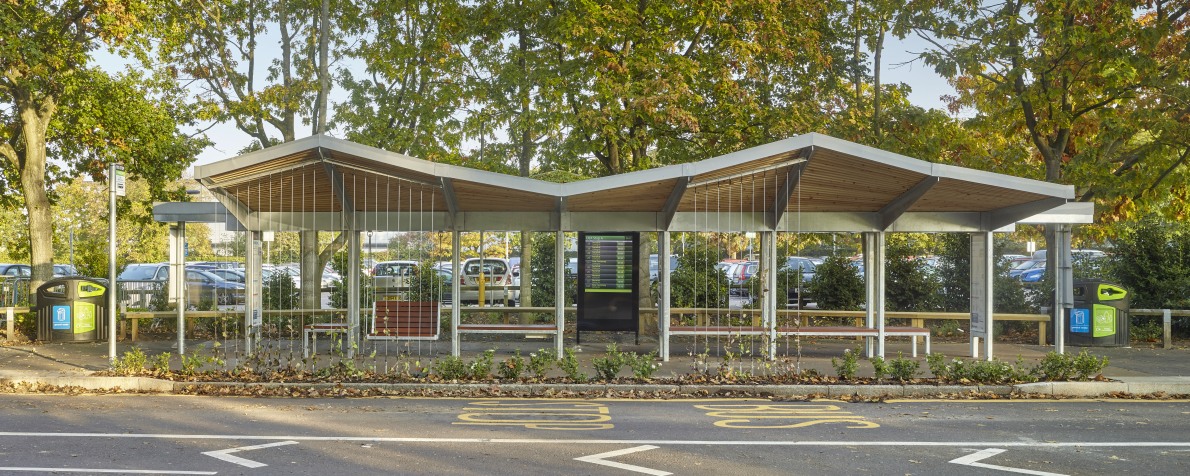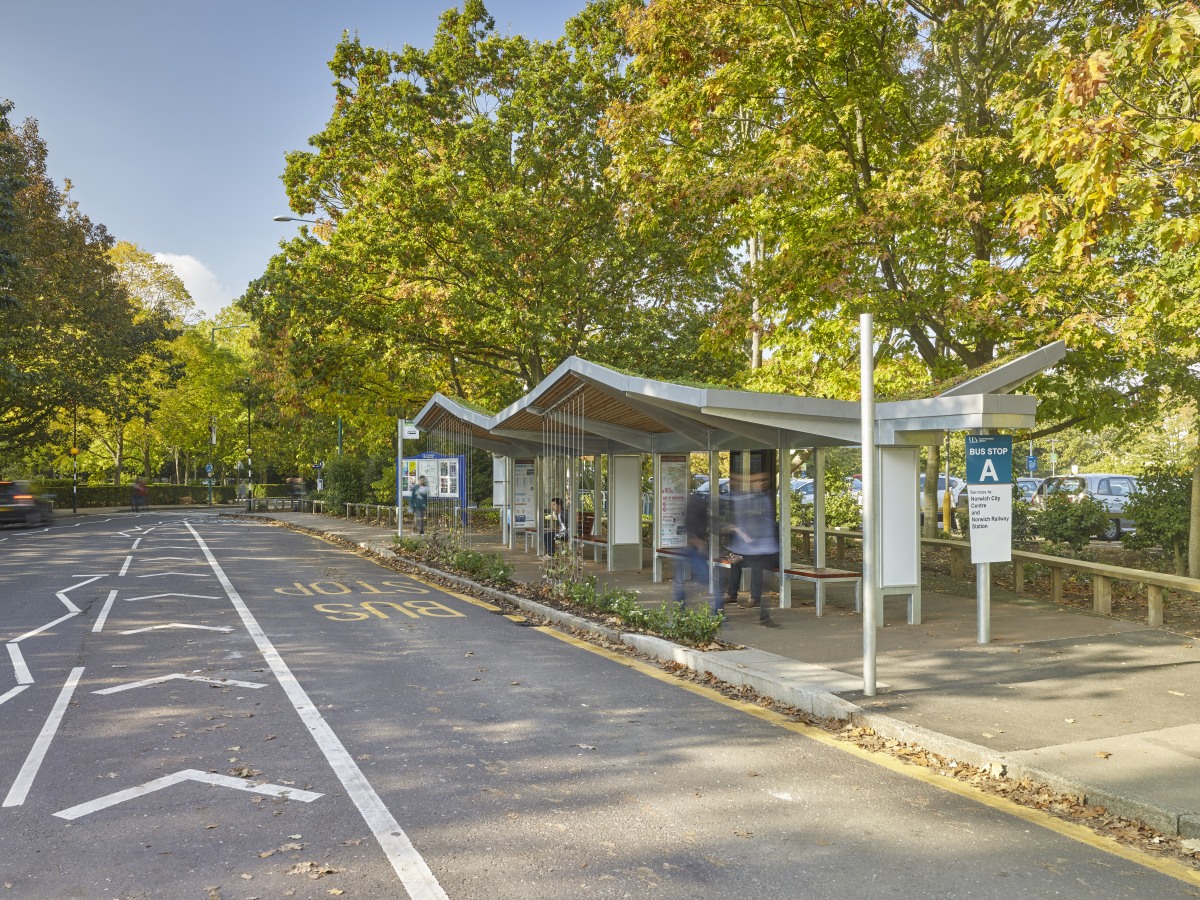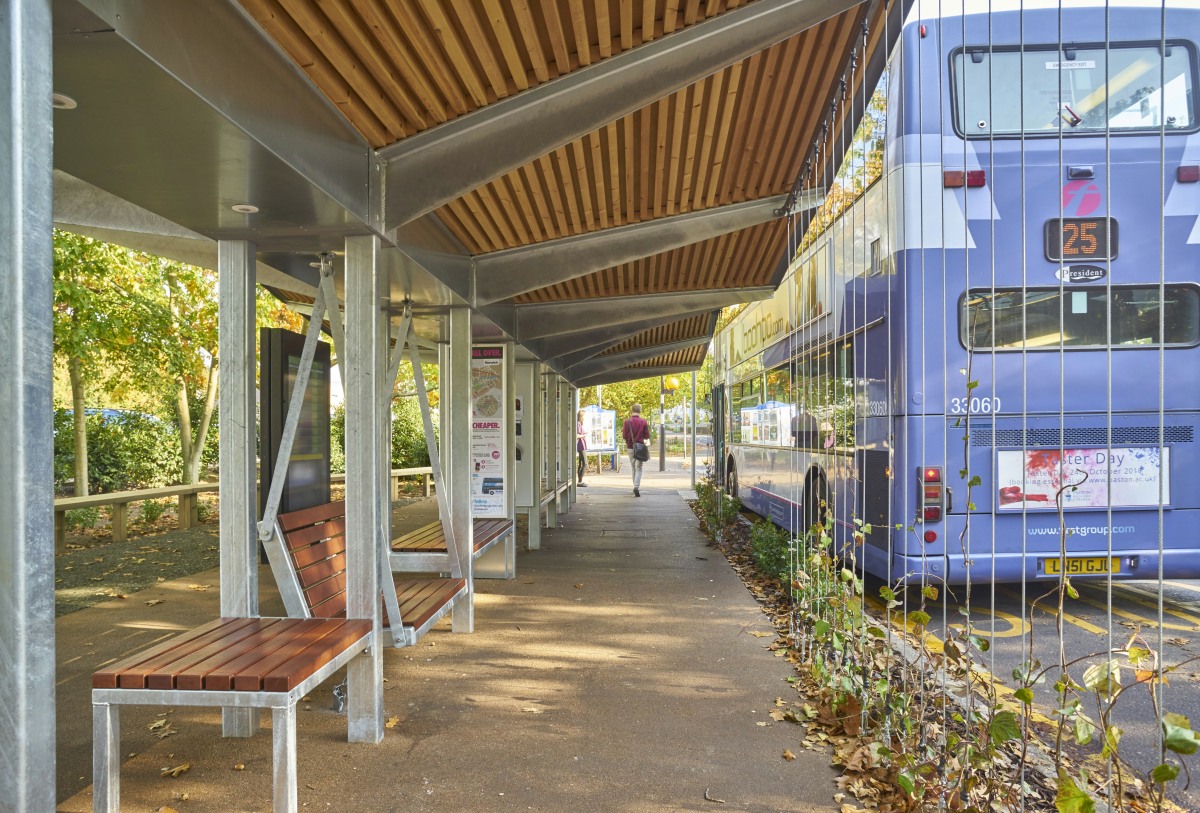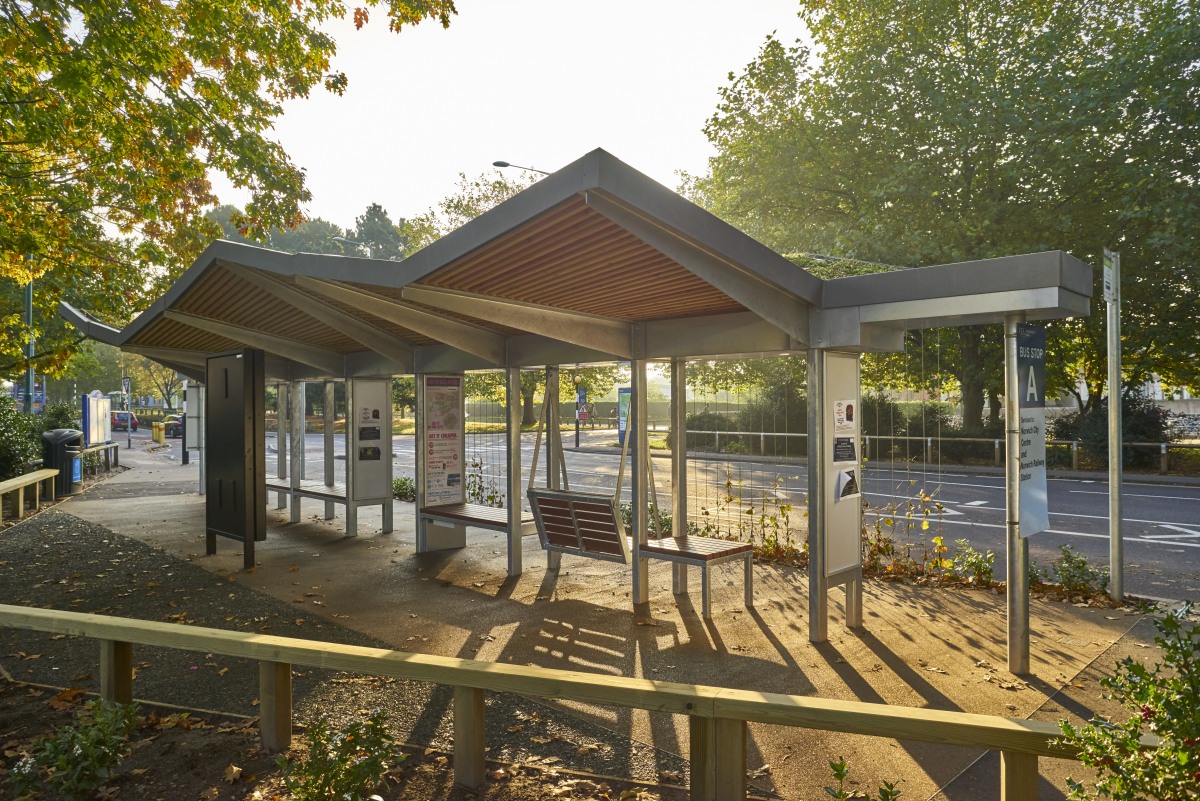News
New UEA Bus Shelters Unveiled
The shelter has been constructed using low carbon, recycled materials where suitable to reflect the UEA’s sustainability aspirations, while some of the seats take the form of swing seats, providing an element of fun to the waiting time.
The University of East Anglia has unveiled it’s new bus shelter as part of a joint initiative by Norfolk County Council and UEA to improve the image and efficiency of public transport on campus. The striking design aims to create a more positive and informative experience of public transport and to encourage even more staff and students to consider taking the bus.
The design of the shelter is based on a simple ‘kit of parts’ cantilevered steel structure arranged around a central spine. The angles of the roof structure change along the length of the shelter, creating a striking, folded effect. The modular nature of the design provides scope for use of the design elements within other structures on the campus.
Architect Kirstin Aitken commented “Our design for the shelter makes use of the idea of modularity and repeatability. We developed this idea in the concept stage by creating a simple, interactive, peg based model which allowed us to try out the effect of different combinations of roof angles along the structural spine. This helped us to demonstrate how the roof structure can be used to create animation along the length of the shelter. The ultimate aim is that this new exciting design for a bus shelter challenges people’s expectations in much the same way that we hope to encourage staff and students at UEA to look again and consider taking public transport.”
The shelter has been constructed using low carbon, recycled materials where suitable to reflect the UEA’s sustainability aspirations, while some of the seats take the form of swing seats, providing an element of fun to the waiting time. The choice of sustainable materials was approached in a number of ways, including use of recycled materials, design for reuse and deconstruction, choosing highly durable materials with low maintenance requirements, and, in less vulnerable locations, use of timber.




